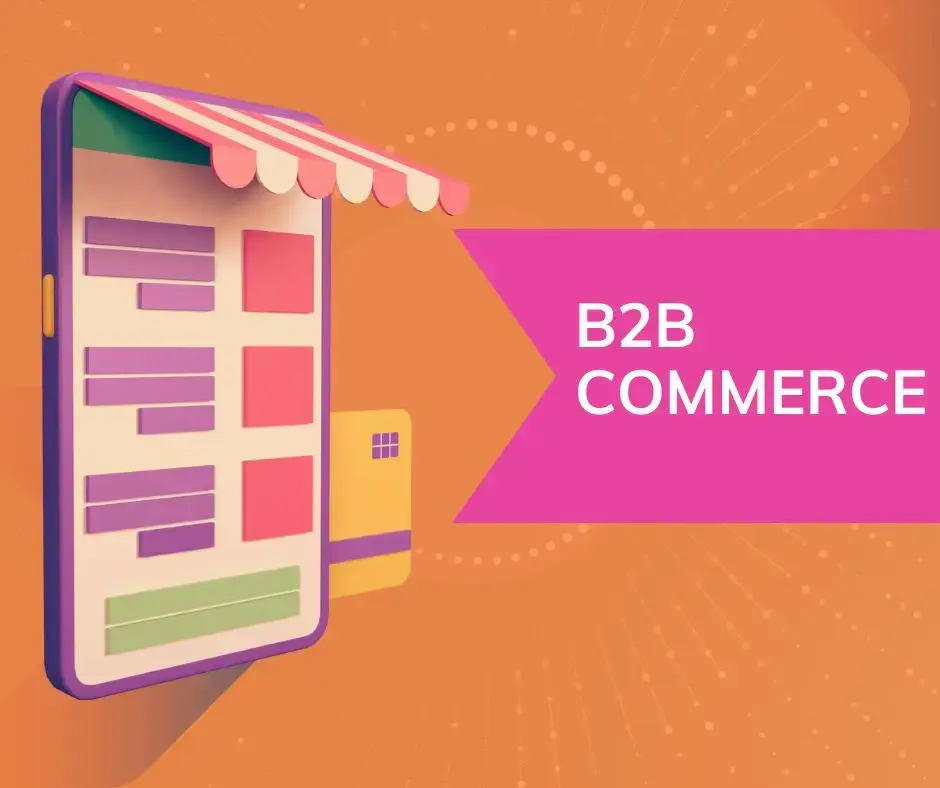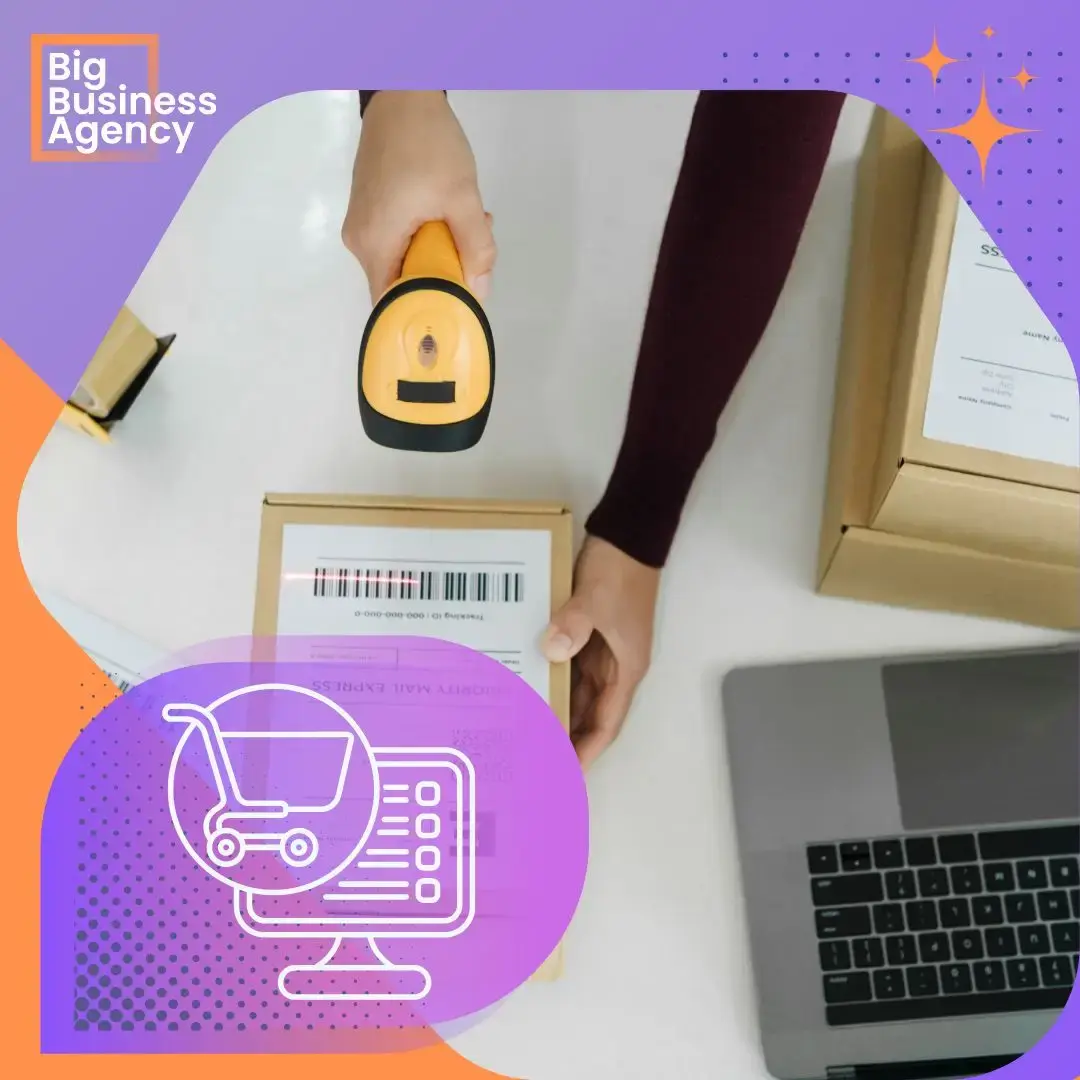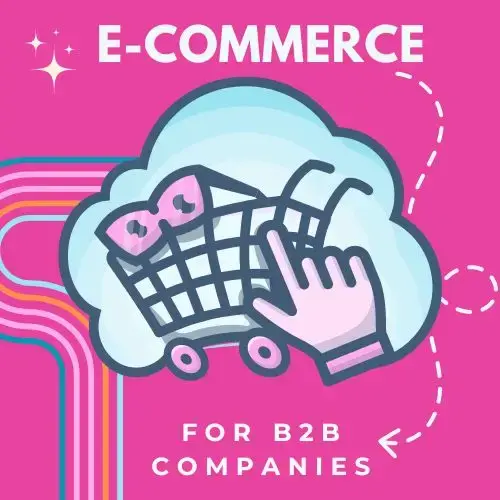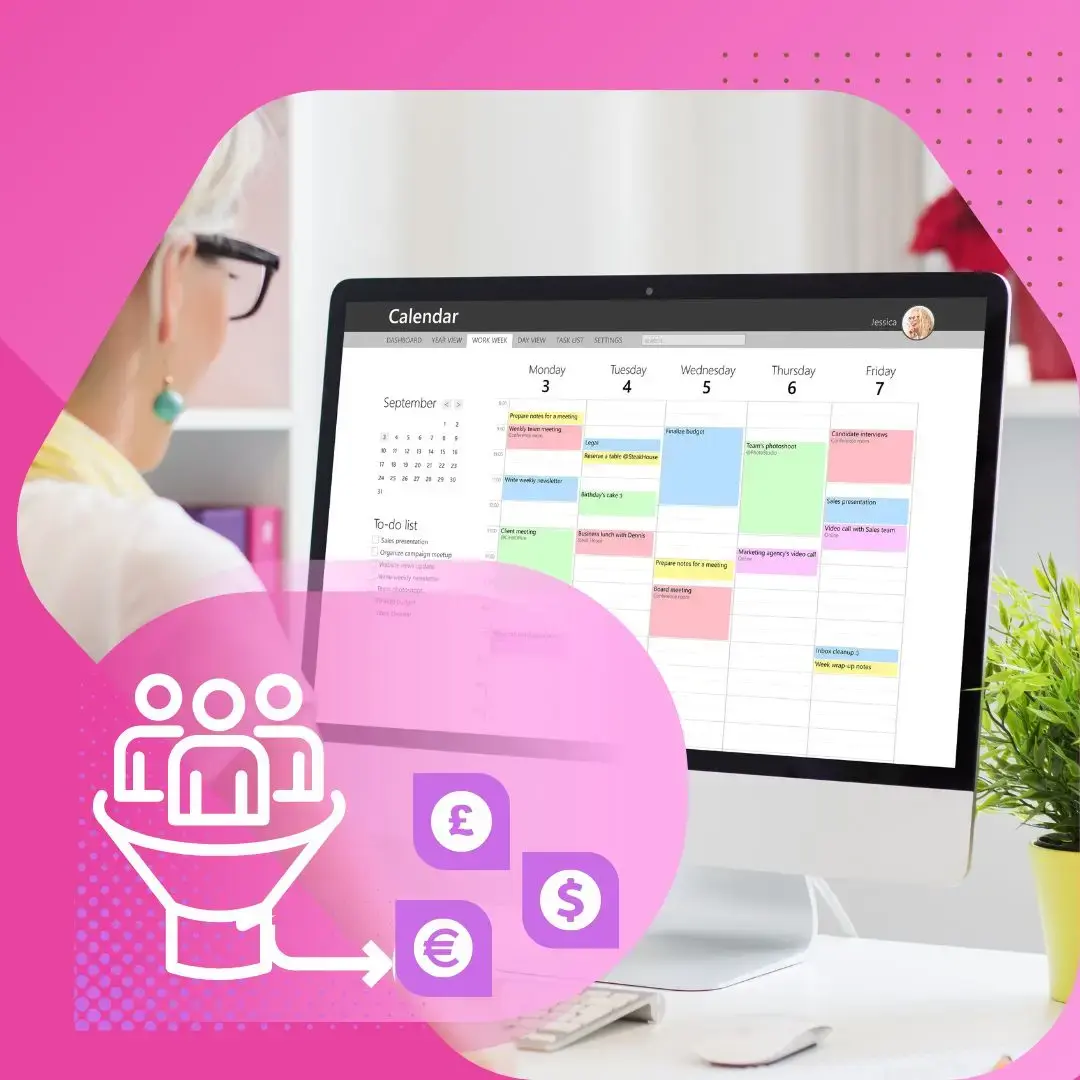Transform Your Business with Cutting Edge B2B eCommerce Solutions
As B2B buyers continue to evolve integrated B2B eCommerce continues to be vital. In fact, the global B2B eCommerce market is projected to reach $20.9...

According to a Forrester report, B2B e-commerce sales in the US are projected to hit $3 trillion by 2027. As companies continue to embrace digital transformation, mastering the implementation of these sales methods can offer a notable competitive advantage.
In contrast to B2C, which targets individual consumers, B2B transactions involve large-scale orders, enduring relationships and strategic dealings.
Settle in as we explore this fascinating landscape and rest assured – we'll share some valuable insights along the way.
sit back and listen to this new episode - a deep dive into how eCommerce can simplify operations and streamline processes in your business
To begin with, B2B commerce, or business-to-business commerce, encompasses the exchange of goods or services between businesses. This model is crucial to global economic systems, as it facilitates trade and collaboration among various industries. For instance, manufacturing corporations supply essential components to other businesses, while technology firms offer cloud computing solutions that support enterprise operations.
According to a report by McKinsey & Company, B2B commerce is projected to reach $20.9 trillion by 2027, underscoring its significance in the global market landscape.
Moreover, the advancement of digital platforms is streamlining these interactions, making B2B commerce more efficient and accessible (Deloitte, 2022).
B2B commerce, or business-to-business commerce, refers to the transactions conducted directly between businesses rather than between a business and individual consumers. These transactions can range from procuring raw materials and services to selling finished products to wholesalers and retailers.
B2B commerce is characterised by higher transaction values and longer sales cycles and often involves complex supply chain logistics, tariffs, insurance, duty and border controls.
The scope of B2B commerce is vast, encompassing various industries such as manufacturing, distribution, retail, and services. It leverages digital platforms and technologies to streamline operations, improve efficiency, and enhance business relationships.
In every B2B supply chain, there are three essential flows:
In the digital age, B2B commerce has evolved beyond traditional sales channels to include online marketplaces, e-procurement platforms, and cloud-based solutions.
 B2B commerce differs from B2C commerce in several key ways. First, B2B transactions typically involve larger quantities and higher transaction values compared to B2C transactions, which are usually of lower value and involve individual consumers.
B2B commerce differs from B2C commerce in several key ways. First, B2B transactions typically involve larger quantities and higher transaction values compared to B2C transactions, which are usually of lower value and involve individual consumers.
Second, the sales cycle in B2B commerce is often longer and more complex, involving multiple decision-makers and approval processes.
B2B Commerce involves more Informational and transactional flows than B2C.
In contrast, B2C transactions are generally quicker and involve fewer decision-makers. B2C revolves around emotional buying, targeting individual consumers. B2C relationships are often transactional and focused on individual purchases.
Finally, B2B commerce requires more personalised and tailored marketing strategies, while B2C marketing often targets a broader audience with more generalised campaigns.
The B2B market is incredibly expansive, characterised by its vastness, diversity, and dynamic nature. It spans many industries, including but not limited to manufacturing, technology, healthcare, logistics, finance, and telecommunications.
These sectors contribute unique elements and demands to the B2B landscape, creating a complex tapestry of interactions and transactions. With the rise of digitalisation, B2B commerce is undergoing a significant transformation, rapidly evolving to meet the changing needs of businesses in this digital era.
This evolution is not just a shift in how transactions are conducted but also a catalyst for fostering unprecedented levels of innovation and efficiency across the board. Digital tools and platforms are streamlining operations, enabling faster and more reliable communications, and opening up new opportunities for collaboration and growth. As a result, businesses are more agile and able to optimise their supply chains, enhance customer experiences, and develop more strategic partnerships, positioning themselves for success in a competitive global market.
B2B commerce comes in various forms, each tailored to meet distinct business needs and industry demands. A common form is supplier-oriented B2B commerce, where suppliers establish a marketplace for numerous buyers, often found in sectors such as manufacturing and agriculture.
Conversely, buyer-oriented B2B commerce involves buyers setting up an online marketplace where suppliers can bid for contracts, frequently utilised in government procurement and large enterprises. Intermediary-oriented B2B commerce features a third-party platform that facilitates transactions between multiple suppliers and buyers, exemplified by platforms like Alibaba and ThomasNet.
Moreover, B2B marketplaces can be vertical or horizontal; vertical marketplaces focus on specific industries, while horizontal marketplaces span a broad array of products and services across different industries.
One notable example of successful B2B commerce is Alibaba, a global leader in connecting businesses with suppliers and manufacturers. Alibaba's platform allows businesses to source products from around the world, facilitating international trade and expanding market reach.
Another example of B2B commerce is Stripe, a global technology company that provides financial infrastructure for the Internet. Stripe offers a suite of APIs and tools that enable businesses to accept online and in-person payments, automate financial processes, and integrate financial services into their platforms.
With a focus on simplifying payment processing for companies of all sizes, Stripe plays a crucial role in facilitating transactions between businesses, making it an essential player in the B2B landscape. Their innovative solutions help businesses streamline operations and enhance customer experiences.
 Digital transformation projects, where e-commerce platforms, AI-driven systems and data analytics enhance the buying experience, streamline operations and foster better customer relationships, are the future for competitive B2B companies.
Digital transformation projects, where e-commerce platforms, AI-driven systems and data analytics enhance the buying experience, streamline operations and foster better customer relationships, are the future for competitive B2B companies.
Technology is a transformative force in B2B commerce, revolutionising how businesses operate and interact with each other.
By implementing advanced Customer Relationship Management (CRM) systems like HubSpot, companies can efficiently manage and analyse customer interactions and data throughout the customer lifecycle.
Furthermore, the integration of AI-driven chatbots into B2B platforms introduces a new level of automation and efficiency in customer service. These chatbots are capable of handling a wide array of inquiries, offering instant support and solutions, thus freeing up human resources for more complex tasks.
Beyond these applications, technology empowers businesses to streamline their operations, reduce manual efforts, and optimise supply chain processes. Through advanced data analytics, businesses gain deeper insights into market trends and customer behaviours, which can inform better strategic decisions and foster innovation.
Overall, the intelligent use of technology not only automates routine processes but also enhances the overall customer experience, ultimately driving significant sales growth and competitive advantage in the B2B marketplace.
 Several leading B2B commerce platforms are transforming the way businesses conduct transactions and manage their operations.
Several leading B2B commerce platforms are transforming the way businesses conduct transactions and manage their operations.
Platforms such as Shopify Plus offer robust e-commerce solutions tailored for B2B needs, including custom pricing, bulk ordering, and advanced reporting capabilities.
As an expensive, resource-intensive commerce solution, Shopify Plus isn't for everyone because the platforms are not just expensive; they are too sophisticated and offer functionality that many companies simply don't need and will never use.
If you want to remove some internal barriers and fully automate your quote-to-cash process, consider HubSpot. With the eCommerce option of CommercePro integrated with your ERP via Commercient, you have a fully integrated process with an eCommerce shop and a customer portal for customer service excellence.
For more information on CommercePro read our read blog here.
 At its core, B2B commerce thrives on relationships built on trust and mutual benefits, serving as the backbone that supports successful business interactions. These relationships are cultivated over time through consistent, transparent communication that ensures both parties are aligned in their goals and expectations.
At its core, B2B commerce thrives on relationships built on trust and mutual benefits, serving as the backbone that supports successful business interactions. These relationships are cultivated over time through consistent, transparent communication that ensures both parties are aligned in their goals and expectations.
Exceptional service plays a crucial role in reinforcing these bonds, as businesses that go above and beyond to meet the needs of their partners demonstrate a commitment to shared success. Delivering on promises consistently solidifies trust, as it shows reliability and integrity, two critical components of any long-term partnership.
HubSpot's new Service Hub Help Desk is integrated into the customer's account. It allows rapid triaging of customer service enquiries and seamless routing around the company for rapid resolutions that increase trust and satisfaction.
A well-defined sales funnel is crucial for B2B success, serving as a roadmap that guides potential clients through a structured journey from initial contact to final purchase. This funnel is composed of several stages, each designed to address specific aspects of the customer journey and requiring distinct strategies to effectively move prospects forward.
The first stage, lead generation, focuses on attracting potential clients through various sales and marketing outreach efforts. With the increase in Self Source Sales Motions the lead generation activity should be as automated as practical so reps can attend to all stages of their pipeline.
This stage is vital for understanding customer needs and demonstrating the value your business can offer. Next comes the negotiation phase, where the focus shifts to addressing any objections and aligning your offerings with the client's specific requirements. This stage demands skilled communication and a keen understanding of the client's business dynamics.
Finally, the conversion stage is where all previous efforts culminate in a successful sale. It involves closing the deal and solidifying the relationship, transforming prospects into loyal customers. Each step in this intricate process requires a tailored approach, ensuring that prospects receive the right message at the right time, ultimately leading to a higher conversion rate and fostering long-term business relationships.

Cross-selling and upselling are an important part of B2B commerce. Cross-selling means suggesting complementary products, while upselling aims to encourage customers to opt for a more premium product.
Understanding your customer's context and needs is of paramount importance when it comes to effectively implementing cross-selling and upselling strategies. This involves a deep dive into analyzing and comprehending the specific circumstances and requirements of each customer.
By doing so, businesses can tailor their recommendations in a way that resonates with the customer's unique situation, thereby enhancing the likelihood of a successful sale. It requires an attentive approach to examining their purchase history, which provides valuable insights into their buying patterns and preferences.
By understanding what products or services they have previously acquired, businesses can identify complementary items or premium alternatives that align with the customer's interests and needs. This strategic approach not only ensures that the recommendations made are relevant and appealing but also adds genuine value to the customer's experience, fostering a sense of trust and satisfaction.
Personalisation is Key
Generic selling is a thing of the past. Customise your approach by personalising offers based on customer data. A touch of personalisation can significantly enhance your cross-selling and upselling success.

Timing is everything
Introduce cross-sell and upsell opportunities at the right moments – during checkout, post-purchase follow-ups, or after a successful product delivery.

Train your Sales Team
Equip your sales team with the right skills and knowledge to identify cross-sell and upsell opportunities. Regular training and workshops can boost their confidence and effectiveness.

Ensure that your upsell or cross-sell offers present clear value. Highlight benefits, solve pain points, and showcase how these additional products or services fit seamlessly into the customer's operations.
read more on cross-selling and upselling
Getting an in-depth understanding of your customers' journeys will ensure that your sales process is aligned with every stage of their journeys.
Start by mapping each phase of the customer journey, from the initial awareness stage to post-sale engagement. Focus on key touchpoints where cross-selling and upselling opportunities can be seamlessly incorporated.
Leverage data analytics to gain insights into customer preferences and purchasing history, enabling you to craft offers that truly resonate with their specific needs and desires. Also, review their Customer service tickets to discover any underlying trends or changes in their business behaviour. Moreover, make sure your sales and marketing teams are well-equipped to identify these opportunities and have the necessary tools to present them effectively.
By aligning cross-selling and upselling strategies with the customer's journey, you not only boost sales potential but also enhance the overall customer experience and satisfaction.

It is clear that marketing plays a vital role in B2B eCommerce for business growth and reaching your target audience. Whether you are new to the field or aiming to scale your current B2B eCommerce initiatives, these strategies can help you attract more visitors, enhance conversion rates, and elevate sales.
Tailoring your approach to individual customers is crucial for forging strong connections. By developing content that directly addresses their specific interests and requirements, you can enhance their sense of being valued and boost their interaction with your brand.
Producing top-notch content is an effective strategy for drawing in and engaging your target audience. By sharing blog articles, videos, and various content forms, you can establish yourself as an industry leader while offering valuable insights to prospective clients and customers. Content marketing also enhances your SEO and boosts online sales.

Crafting content that addresses each stage of your customer journey is an excellent strategy to captivate your audience and steer them toward making a purchase. By offering informational content for those in the awareness phase, educational content for those in the consideration phase, and persuasive content for those in the decision phase, you can establish a seamless customer journey that results in conversions.
B2B eCommerce marketing demands a comprehensive approach, utilising a variety of tactics to effectively reach and engage your target audience. By adopting these successful marketing strategies, you can attract more visitors, boost conversions, and expand your business.
Email marketing remains one of the most effective ways to reach your target audience and promote your products or services. By building an email list and sending out regular newsletters or promotional emails, you can keep your audience engaged and informed about your latest offerings.
ABM is a highly focused business strategy in which a sales and marketing team work together to treat an individual prospect or customer like its very own market. ABM involves creating highly personalised campaigns directed at specific accounts, such as individual businesses, rather than casting a wide net to attract as many leads as possible.
This strategy is particularly effective in B2B commerce due to its emphasis on developing a deep understanding of the targeted accounts, allowing for more tailored messaging and solutions that address the unique needs and challenges of each business.
ABM requires close alignment between sales and marketing teams to identify key accounts that are most likely to benefit from the company’s offerings. This approach often includes personalised content, bespoke communications and targeted advertising, all designed to engage and nurture these potential high-value clients throughout the buying journey.
The benefits of ABM are significant, as it allows companies to focus their resources on high-potential accounts, leading to higher conversion rates, increased customer satisfaction, and stronger client relationships.
This strategy not only enhances the efficiency of marketing efforts but also maximises return on investment by ensuring that resources are invested in the most promising leads. ABM has emerged as a crucial tactic for businesses seeking to grow their market share and build long-term partnerships with key clients.
.webp?width=580&height=486&name=ABM%20model%20(1).webp)
Customer testimonials and case studies are an effective means of establishing trust and credibility with prospective clients. Featuring reviews on your B2B eCommerce site can offer social proof of the high quality and dependability of your products or services..
Retargeting involves showing targeted ads to people who have previously visited your eCommerce site but haven't yet made a purchase. By reminding these users about your products or services, you can encourage them to come back and complete the purchase.
Social media is a powerful tool for reaching new audiences and increasing brand awareness. By adding social sharing buttons to your B2B eCommerce store, you can encourage your customers to share your content with their networks, which can help increase your reach and drive more traffic to your site.
Search engine optimisation (SEO) is essential for boosting the visibility and reach of your B2B eCommerce store. By refining your site's architecture, content and metadata, you can enhance its position on search engine results pages and draw more organic traffic.
SEO is indispensable for any online business but its not a set and forget thing. Keyword research, on page and off page optimisation as well as creating regular content are all required to get you found on Google.
A comprehensive keyword strategy is crucial for enhancing the visibility of your B2B eCommerce store in search engine results. By performing keyword research and integrating relevant keywords into your content, you can boost your site's ranking and draw more organic traffic. SEO cannot be effectively implemented without a keyword strategy, so it's best to hire experts if you're not confident in SEO.
Sustainability is not just a trend; it's a necessity. B2B companies are increasingly adopting eco-friendly practices, from sustainable sourcing to reducing carbon footprints, to meet the demands of environmentally conscious clients.
Digital B2B Commerce serves as a driving force for joint sustainability efforts. Within a connected digital environment, businesses can form partnerships, exchange best practices, and combine resources to enhance their influence.
According to the latest Superpowers Index research, B2B buyers are increasingly focusing on ESG topics when selecting brands to partner with. Companies that emphasise sustainability are 28% more likely to have experienced revenue growth in the past year.
![]()
The future of B2B commerce holds tremendous potential and optimism, as numerous technological advancements are poised to reshape the landscape in unprecedented ways. Businesses can anticipate significant developments in artificial intelligence (AI), which will enhance decision-making processes, automate routine tasks and provide deeper insights into consumer behaviour through advanced data analytics.
Blockchain technology is introducing unparalleled transparency and security in transactions, ensuring trust and efficiency in transactional supply chains without the need for industry intermediaries.
Moreover, the Internet of Things (IoT) is revolutionising business operations by enabling real-time monitoring and management of individual components and resources, optimising processes and logistics, and facilitating seamless communication between devices.
These technological innovations will not only transform how businesses interact and conduct transactions but also foster new levels of collaboration and strategic partnerships, ultimately driving growth and innovation across the B2B sector.
B2B Commerce is a vibrant and evolving growth mechanism, offering endless opportunities to remove internal barriers to growth and eliminate friction in supply chains willing to invest, adapt and innovate.
The primary goal is to facilitate sophisticated business transactions, focus on long-term relationships and remove internal barriers to growth.
Ensure you can understand your customer's business and the pressures they are facing so you can react:
Technology automates the flow of information and transactions along the supply chain. It streamlines operations, enhances customer experiences, and drives sales growth through automation and data analytics.
Personalisation ensures that offers are relevant to customer needs, increasing the likelihood of successful sales.
Challenges include the fact that initial sales are usually very long and complex engagements with complex decision-making processes and intense competition.
This is a common myth about B2B businesses and we're here to set you straight - it's simply not true that B2B companies don't require as much marketing as B2C businesses.
Although B2B companies typically have smaller, more focused audiences, they must still allocate resources to marketing to attract leads build their brand and their client base.
B2B marketing can be equally innovative and effective as B2C marketing, utilising a diverse array of tactics, including content marketing, social media, email campaigns and events and even Account Based Marketing which can delivery highly customised and personalised campaigns rarely seen in B2C marketing.
Deloitte:Driving commercial success in B2B through customer experience
Transform your Business with Cutting Edge eCommerce Solutions

As B2B buyers continue to evolve integrated B2B eCommerce continues to be vital. In fact, the global B2B eCommerce market is projected to reach $20.9...

Digitising B2B contracted customers with an easy-to-use integrated eCommerce CRM can transform your business with simplified operations. Imagine one...

How to get more B2B leads Discover the most effective strategies to increase B2B leads and boost your sales